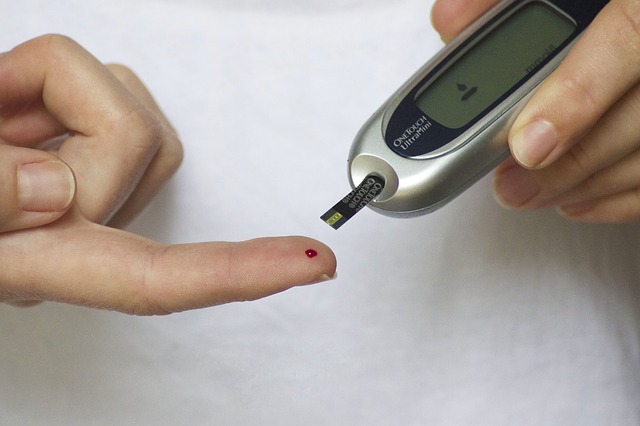Folate levels are dropping across the population according to recent government findings from the National Diet and Nutrition Survey (NDNS).
The survey found that over 90% of childbearing women are folate deficient. The government is now calling for mandatory fortification of flour with folic acid.
The survey confirmed that folate levels are dropping across the population and this places women at an elevated risk of their babies being born with spina bifida and anencephaly (absence of a major portion of the brain).
16% of childbearing age (16-49 years) women were also found to have blood folate below the threshold of 305 nanomols per litre (nmol/L) therefore placing them at an increased risk of anaemia.
The UK currently fortifies their flour with nutrients such as iron, calcium, along with B vitamins such as thiamin and niacin. While efforts to include folic acid have been mixed, the Scientific Advisory Committee on Nutrition (SACN) published a review on folic acid.
The committee continues to recommend a mandatory fortification of flour with folic acid in order to reduce the risk of neural tube defects in fetuses.
Why Folate?

Folic acid refers to the oxidised synthetic compound, whereas folate is the general term of water soluble B-vitamins – known as Vitamin B9. Folate made with tetrahydrofolate derivatives is found naturally within food.
Tetrahydrofolate (THF) is the main form of folate that enters the metabolic cycle. Unlike natural folates metabolised to THF within the mucus of the small intestine, the folic acid undergoes an initial reduction and then methylation within the liver. It’s then converted into THF which requires dihydrofolate reductase.
Low activity of this enzyme is found in the liver and when combined with a high folic acid intake, it can result in unmetabolised folic acid entering the blood circulation at unnatural levels.
There are several studies supporting unmetabolised folic acid presence with the blood after consuming fortified foods or folic acid supplements.
The Difficulty With Absorbing Folate…
Folate is most readily found in natural food sources such as green leafy vegetables; asparagus, beets, broccoli, cauliflower, collard greens, mustard greens, romaine lettuce, parsley, spinach and lentils. Good sources of folate can also be found in animal products such as calf or chicken’s liver.
Not everyone can derive folate from foods however. People with the MTHFR mutation are unable to break down or efficiently metabolise folic acid in their body. The result is they tend to be folate deficient – even though their blood tests may indicate their folate levels are high.
This can be confusing for people because the blood tests count the folic acid floating around the body that can’t be absorbed. When there’s not enough folate within the body, the nutrients can’t be properly absorbed.
It’s therefore not possible to detoxify heavy metals like aluminium and ammonia from the body. This is why even if someone takes an iron supplement, they may still find themselves becoming anaemic.
The Best Way To Absorb Folate
The Food Standards agency (FSA) would like to fortify bread with folic acid. Yet bread is full of starchy carbohydrates that can only spike the blood sugar levels and cause inflammation within the body..!
Eating more fortified bread is not the answer. As studies show that the percentage of fortified foods has decreased, there has been a rise in the number of neural tube defects.
The most effective way of ensuring you get enough Folate is to take a fortified multivitamin supplement. Everyone – not just pregnant women, will benefit from taking a Folate supplement
The Symptoms Of MTHFR Mutation

Symptoms of low MTHFR mutation affect individuals in various ways and may include:
Autism, Brain Fog, Chronic Fatigue, Decreased levels of Serotonin and Norepinepherine, Insomnia, Memory Loss, Muscle pain and tenderness. Potentially it can also affect mood in the form of disorders and even depression.
Including more natural foods into your diet is one solution but a good methylsulfate supplement is recommended for best results. The MTHFR mutation affects DNA and this can help the body to make up for any genetic issues with the methylation cycle.
It is the 5-Methyltetrahydrofolate (5-MTHF) that is the metabolically active type of folic acid and this goes through a multi-step process to help certain individuals properly transform folic acid into active folate.
Pregnant women, children, young adults and the elderly can all receive good health benefits from taking folate to support the absorption of all other nutrients within the body. For this reason along it is essential that you ensure you are getting enough!
Recommended Examples
ActiveLife™ Capsules –Contains 800mcg (200%% of your recommended daily value) of Folate as (6S)-5-Methyltetra Hydrofolic Acid, equivalent to 1600mcg of (6S)-5-Methyltetrahydrofolic Acid which is equivalent to 1600mccg of (6S)-5-Methyltetrahydrofolic Acid, Glucosamine Salt***). The recommended daily dosage is 6 capsules daily. –Contains 800mcg (200%% of your recommended daily value) of Folate as (6S)-5-Methyltetra Hydrofolic Acid, equivalent to 1600mcg of (6S)-5-Methyltetrahydrofolic Acid which is equivalent to 1600mccg of (6S)-5-Methyltetrahydrofolic Acid, Glucosamine Salt***). The recommended daily dosage is 6 capsules daily.
Active Life is a multivitamin formula containing 130 nutrients, including 75 plant-derived minerals, 12 vitamins and 3 other nutrients that can help to replenish storages that are naturally depleted each day.
|





